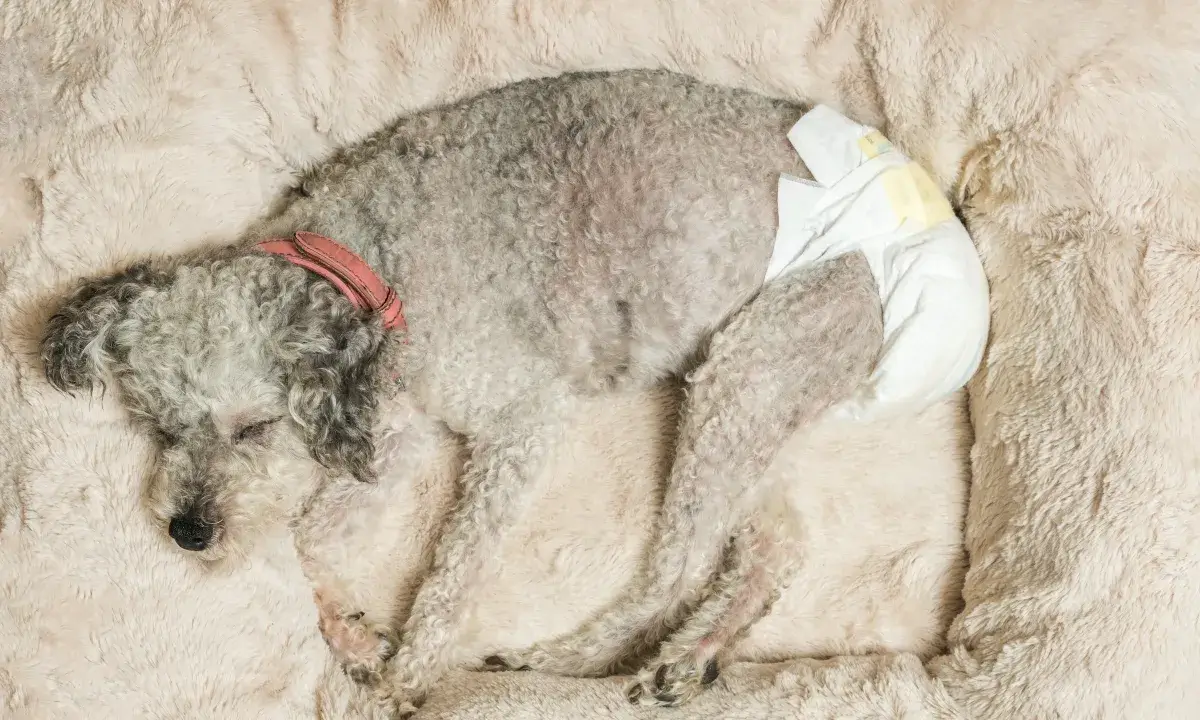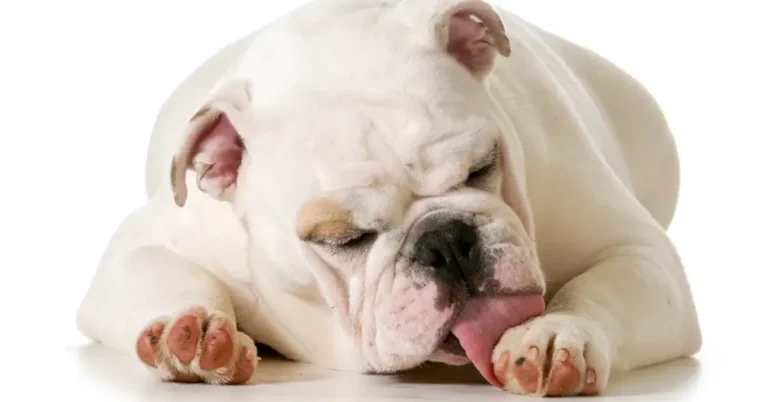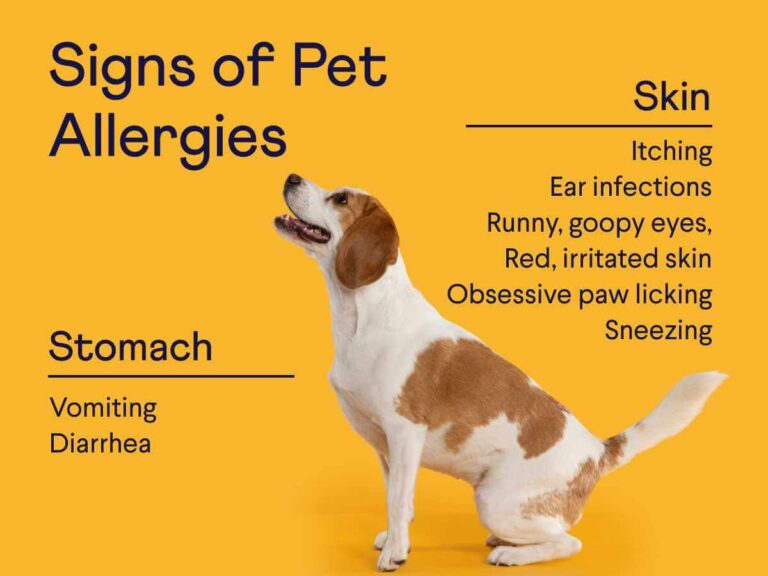Common Behaviors of a Female Dog in Heat
A female dog in heat—also known as being in estrus—is going through one of the most instinctual and hormonally-driven phases of her life. For pet parents, especially those with unspayed dogs, understanding these behavioral and physical shifts is essential not only to ensure the dog’s comfort and safety but also to prevent unwanted pregnancies and manage interactions with other dogs.
Contents
- 1 Understanding the Heat Cycle: A Natural Part of Canine Reproduction
- 2 Key Physical Signs That Your Dog Is in Heat
- 3 Common Behavioral Changes in a Female Dog in Heat
- 3.1 What Age Do Female Dogs First Go Into Heat?
- 3.2 Do Dogs Experience Discomfort During Heat?
- 3.3 How Long Does a Dog Stay in Heat?
- 3.4 Should I Walk My Dog During Heat?
- 3.5 How to Comfort and Care for a Dog in Heat
- 3.6 Complications to Watch For: False Pregnancy & Pyometra
- 3.7 Neutering: A Preventive Step
- 3.8 FAQs About Female Dogs in Heat
Understanding the Heat Cycle: A Natural Part of Canine Reproduction
The canine estrous cycle consists of four key stages: proestrus, estrus, diestrus, and anestrus. Each stage is driven by hormonal changes that influence your dog’s behavior, physical condition, and fertility. The heat cycle generally occurs every six to seven months, although this varies based on breed and size.
- Proestrus (7–9 days): Swollen vulva, bloody discharge, increased urination, and interest from male dogs, but no willingness to mate.
- Estrus (5–9 days): Peak fertility. Discharge may turn pink or straw-colored, and your dog may begin flagging her tail and accepting male advances.
- Diestrus (about 60 days): Fertility ends, progesterone levels stay elevated whether or not the dog is pregnant.
- Anestrus (rest period): Hormones normalize, and the cycle resets.
Key Physical Signs That Your Dog Is in Heat
Pet owners often notice a combination of physical signs that signal their dog has entered the heat cycle:
- Swollen vulva that appears enlarged, tender, and red.
- Vaginal discharge, which begins as bloody and gradually turns pink or watery.
- Frequent urination, often in small amounts and in new places to mark territory.
- Increased genital grooming as she tries to stay clean.
Each of these symptoms reflects hormonal shifts preparing her body for mating.
Common Behavioral Changes in a Female Dog in Heat
When a female dog is in heat, her behaviors often change in noticeable ways. These are largely instinctive responses to hormonal fluctuations and her reproductive readiness.
1. Heightened Affection or Clinginess
Your usually independent pup might suddenly become your shadow. Many dogs seek additional attention, belly rubs, and reassurance during heat, especially in proestrus.
2. Restlessness and Nervous Energy
Hormones can leave dogs feeling anxious or fidgety. You might notice pacing, whining, or trouble settling down, particularly during the fertile estrus phase.
3. Mounting and Humping
Yes, even female dogs display mounting behaviors during heat. This could include humping other dogs, pillows, or even their owners’ legs. It’s driven by hormones, not dominance.
4. Tail Flagging and Presenting
One clear sign of estrus is tail flagging, where the dog moves her tail to the side to expose her vulva—a receptive posture indicating readiness to mate.
5. Roaming or Escape Attempts
Driven by a powerful urge to mate, unspayed females might try to flee the yard or home in search of a male. Ensure your environment is secure during this time.
6. Altered Social Interactions
Dogs in heat may show increased friendliness toward males while being irritable or even aggressive toward other females or those who sniff their rear.
7. Territorial Marking with Urine
Her urine carries powerful pheromones that announce her fertility status to males. This can lead to urinating indoors or during walks more frequently.
8. Nesting or Toy Hoarding
Some females will gather toys, blankets, or even shoes and tuck them away. This can signal an early hormonal response that mimics nesting behavior seen in pregnancy.
What Age Do Female Dogs First Go Into Heat?
Small breeds may enter their first heat at around six months of age, while larger breeds often don’t start until 12 to 18 months. The first heat signifies reproductive maturity but not necessarily emotional or physical readiness for breeding.
Do Dogs Experience Discomfort During Heat?
While dogs can’t tell us how they feel, many display signs of mild discomfort—such as fidgeting or being less playful. Unlike humans, dogs likely don’t experience intense menstrual cramps, but hormonal shifts can make them more sensitive or anxious.
How Long Does a Dog Stay in Heat?
On average, a heat lasts between 2 to 4 weeks. Bleeding typically occurs during the first half (proestrus), while fertility peaks during the second (estrus). Full behavioral normalization occurs by the end of diestrus.
Should I Walk My Dog During Heat?
Yes, but with care. Dogs in heat are highly attractive to males and may not respond reliably to recall. Always walk on a leash, avoid off-leash parks, and stick to quiet routes. If in doubt, provide enrichment and play in a secure yard.
How to Comfort and Care for a Dog in Heat
Each dog reacts differently, so pay close attention to her needs:
- Provide a calm environment and plenty of affection.
- Offer mentally stimulating games or treat puzzles.
- Maintain a routine to reduce anxiety.
- Use doggy diapers or sanitary pads to manage discharge.
- Clean bedding regularly and limit access to carpets or sofas.
Complications to Watch For: False Pregnancy & Pyometra
After a heat cycle, some dogs experience false pregnancy, marked by nesting, enlarged mammary glands, and even milk production. While usually harmless, it can escalate into serious conditions like pyometra—a potentially fatal uterine infection.
Signs of Pyometra Include:
- Loss of appetite
- Lethargy
- Vomiting
- Vaginal discharge (often foul-smelling)
- Excessive thirst
If you observe any of these symptoms, seek veterinary help immediately.
Neutering: A Preventive Step
If you’re not planning to breed your dog, spaying her is one of the most responsible choices. It prevents heat cycles, eliminates the risk of pyometra, and reduces the chances of reproductive cancers. Neutered dogs also show reduced roaming and marking behaviors.
FAQs About Female Dogs in Heat
How do I know when my dog’s heat is over?
Discharge will taper off and her behavior returns to normal. She’ll lose interest in males and stop marking frequently.
Do dogs cry or whine when in heat?
Some do. Hormonal shifts can cause whining or vocalization, especially if they feel restless or anxious.
Can female dogs smell when they’re in heat?
Yes—to other dogs especially. Males can smell a female in estrus from miles away. Some pet owners also notice a mild odor.
Can a dog get pregnant when not in heat?
No. Pregnancy is only possible during the estrus stage of the heat cycle.
What if my dog mates accidentally?
Contact your veterinarian immediately. Emergency contraception is possible within a few days of the incident.
Do female dogs feel pleasure when mating?
There is no definitive research confirming this, but mating is hormonally driven, not based on emotional attachment.
How can I protect my home during heat?
Use dog diapers, restrict access to furniture, and place washable bedding or towels in your dog’s favorite spots.
For more expert guidance on dog care, reproduction, and behavior, explore AnimalGator.com’s Pet Care Guides and Breed Profiles. AnimalGator is your trusted source for compassionate, science-backed pet advice that puts your animal’s well-being first.
- When Can Kittens Eat Dry Food? (Feeding Chart & Expert Guide) - 15 September 2025
- Black Smoke Maine Coon: A Rare Beauty Among Cats - 5 August 2025
- Short Poodle Haircuts: 11 Low-Maintenance Cuts for Effortless Grooming - 27 July 2025







